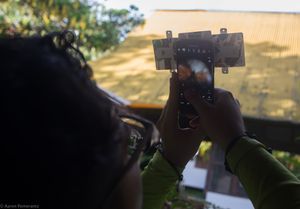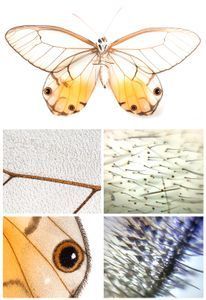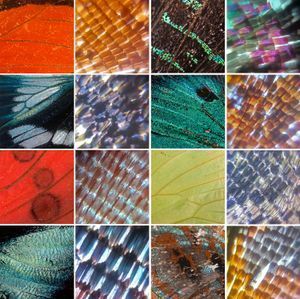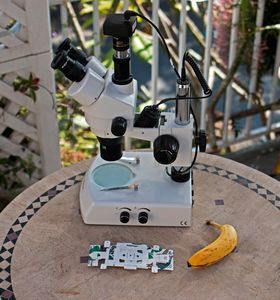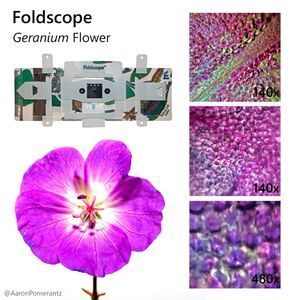From the City to the Jungle with the Foldscope
 Jul 31, 2015 • 3:45 PM UTC
Jul 31, 2015 • 3:45 PM UTC Unknown Location
Unknown Location 140x Magnification
140x Magnification Microorganisms
Microorganisms
Aaron Pomerantz
Learn about the author...
10posts
3comments
5locations
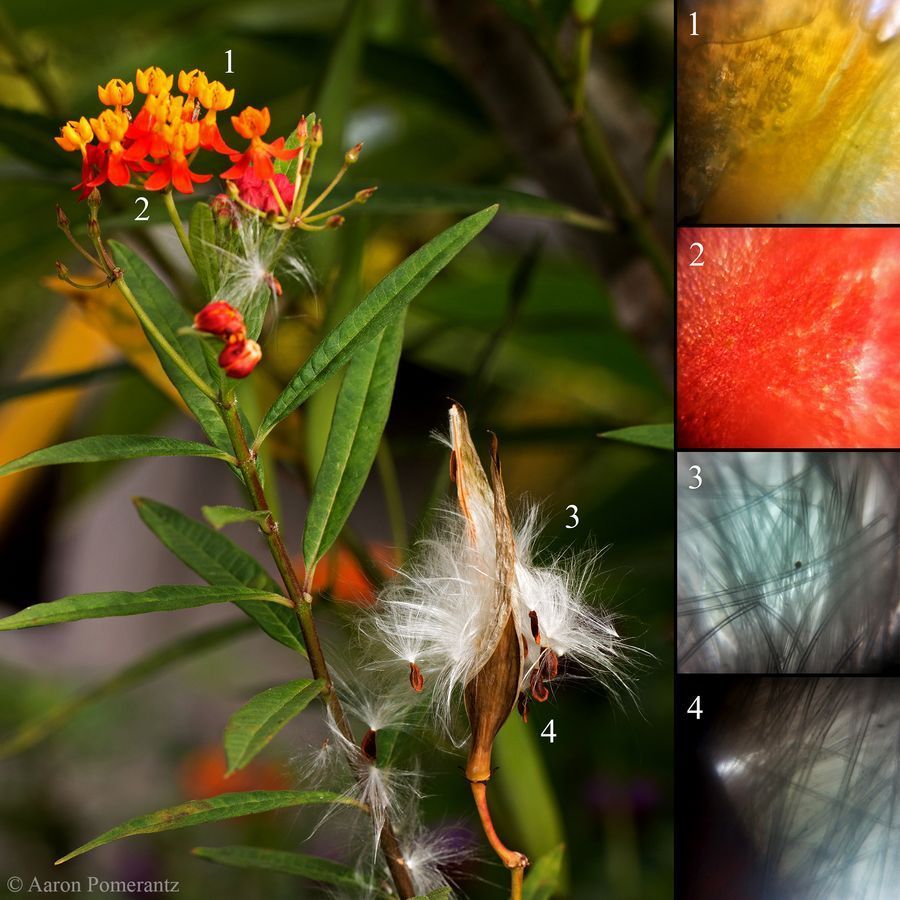
For the past few months, I’ve been conducting research in the Peruvian Amazon . But when I’m not trekking through the jungle, I’m based in Los Angeles, one of the largest cities in the U.S. So for this post I thought I’d compare and contrast a few things I’ve investigated with my Foldscope, but the moral of the story is this: the microcosmos is interesting no matter where you are!
In the City:
In the City:

Milkweed plant in Los Angeles (left) and portions of the plant viewed under the Foldscope at 140x (right). 1) The corona, light orange, which is composed of 5 hoods & horns. 2) The petal, dark orange. 3) Filament-like hairs of the seed, known as the coma. 4) Another view of the white, silky hairs and portion of the seed.
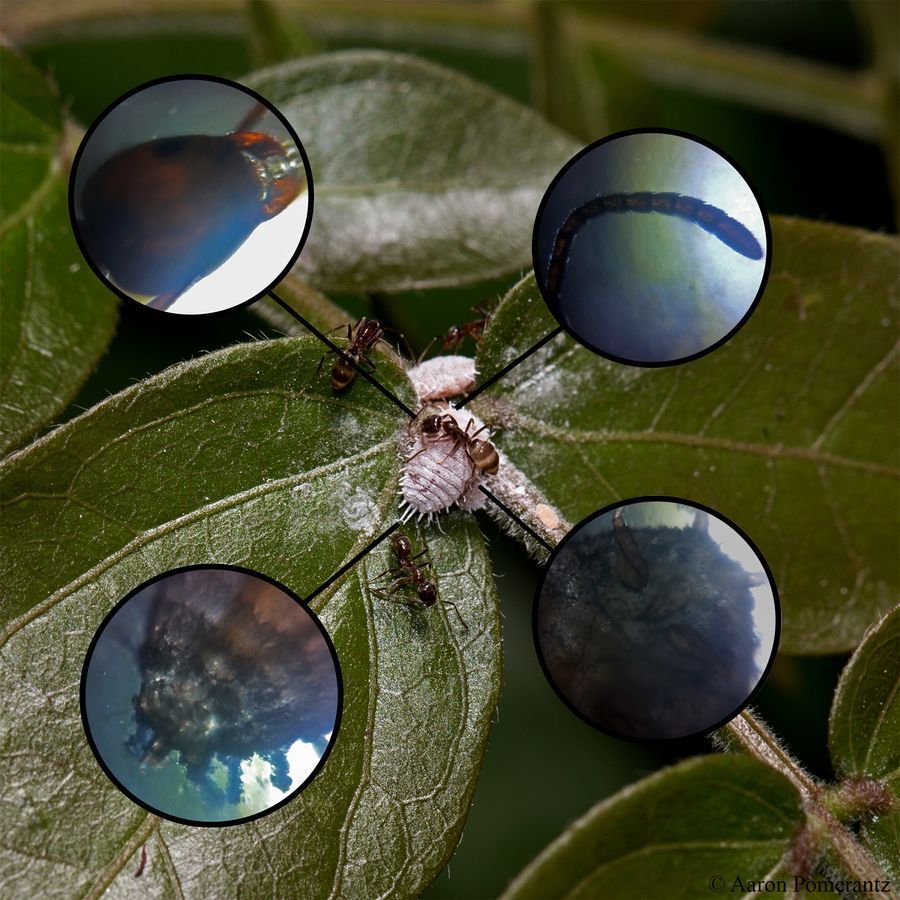
I stumbled on a Calliandra plant that had a small mealybug infestation. Notice the ants as well, which are surrounding and tending the mealybug insects. Mealybugs spend most of their lives sucking the juices from plants and excrete high volumes of excess fluids, which contain sugars. Ants love this fluid and will viciously protect the mealybugs from predators and parasites to keep the sugary substance flowing. Here I used the Foldscope to view the ant head (top left) the ant antenna (top right) as well as the abdomen of the mealybug (bottom left), the source of sugary excrement, and the mouth parts of the mealybug (bottom right) which are used to pierce and draw fluids from the plant.
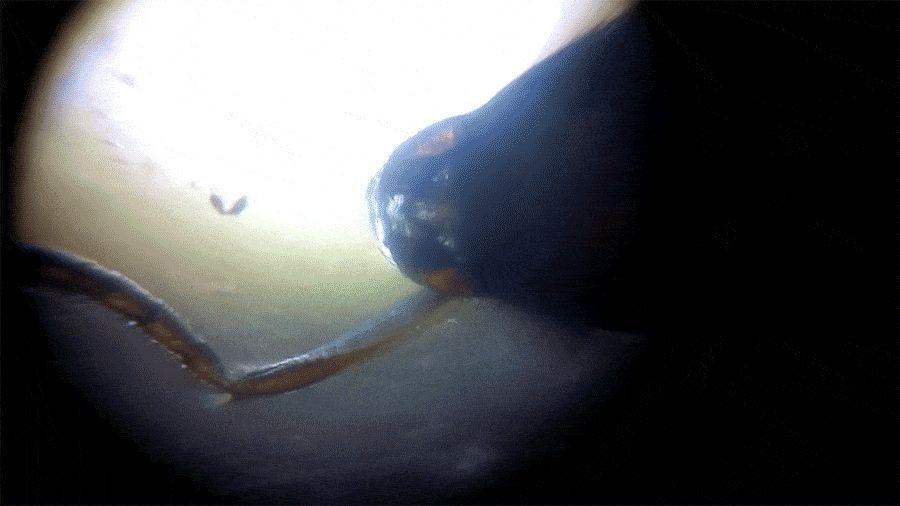
Video of the ant head, mandibles moving

Flowers are always interesting to look at under the Foldscope. Here we see these pink Salvia flowers and a closer look at the anther with pollen (top) the cells of the corolla tube (bottom left) and a region of the filament with pollen (bottom right).
In the Jungle:
In the Jungle:
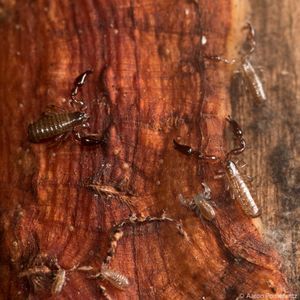

On my last expedition to Tambopata, Peru, I found a little colony of pseudoscorpions. These arachnids are distantly related to true scorpions and spiders and don’t have any stingers, instead they capture even smaller prey with their pincers (aka palpal chelae). I took images of one of these unique little critters with my Canon 100mm lens and then made a slide mount to view some of its morphological features under the Foldscope. I think it’s pretty amazing that all of these pictures were taken out in the field!
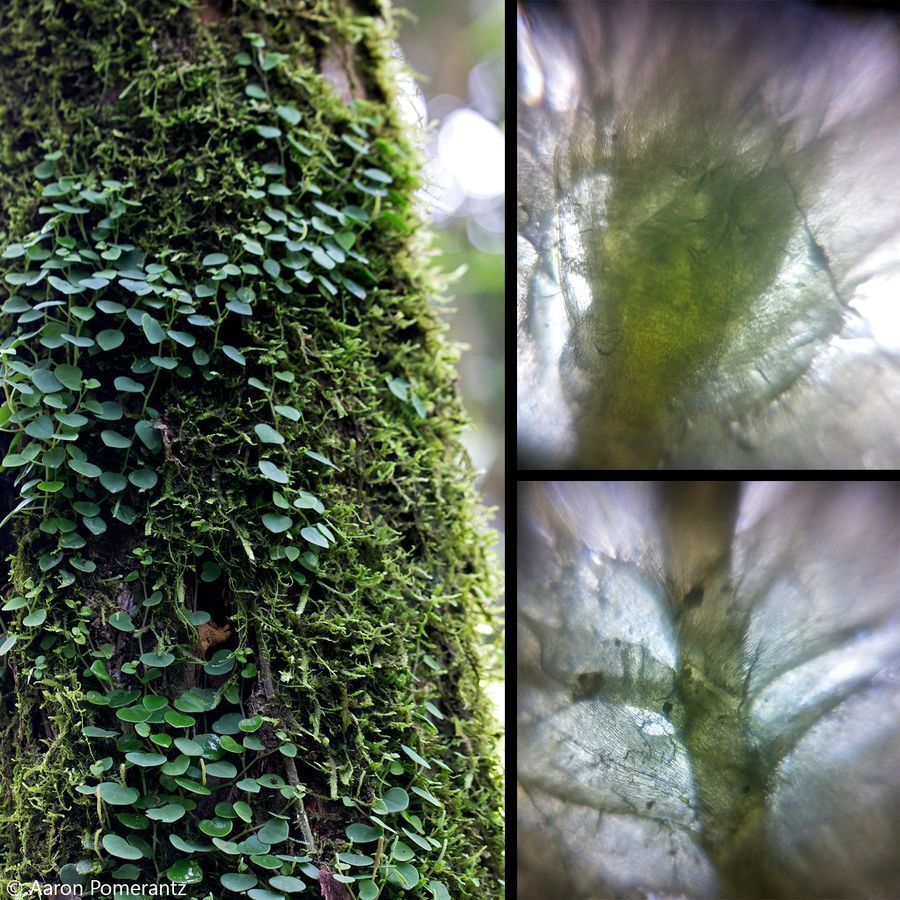
One thing I love about the jungle is how green it is. Due to the high humidity and rainfall, moss is covering just about everything; since moss gametophytes have no vascular system to transport water through the plant they need a damp environment to grow and reproduce. On the right you can see the characteristics of the gametophyte and cells.

The Amazon rainforest has a LOT of termites. With all that decaying wood, these tiny insects are a crucial component for recycling nutrients back into the ecosystem. The soldier caste of Nasute termites have modified heads that essentially act as chemical guns: they secrete noxious, glue-like liquids to fight off intruders. The secretions in termite soldiers can be composed of a variety sesquiterpenes and diterpenes that become an irritating and sticky solution for defense.
Hope you enjoyed these images from the city to the jungle, I’ve got a lot more Foldscope material to share and a video coming soon!
-Aaron
Also feel free to follow me on Twitter @AaronPomerantz
Hope you enjoyed these images from the city to the jungle, I’ve got a lot more Foldscope material to share and a video coming soon!
-Aaron
Also feel free to follow me on Twitter @AaronPomerantz
Sign in to commentNobody has commented yet... Share your thoughts with the author and start the discussion!

 0 Applause
0 Applause 0 Comments
0 Comments